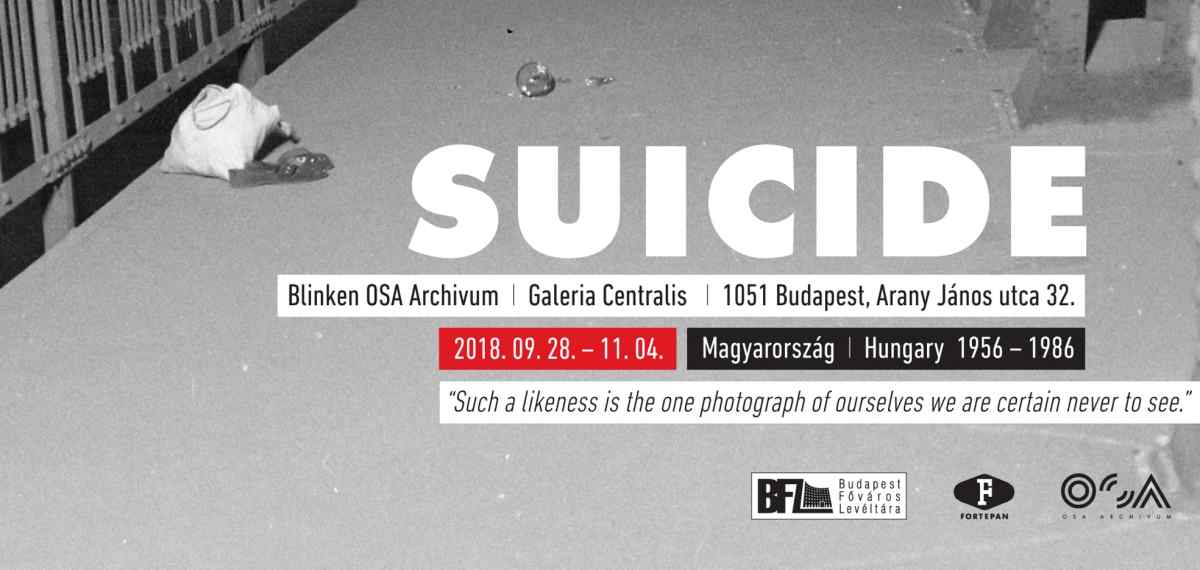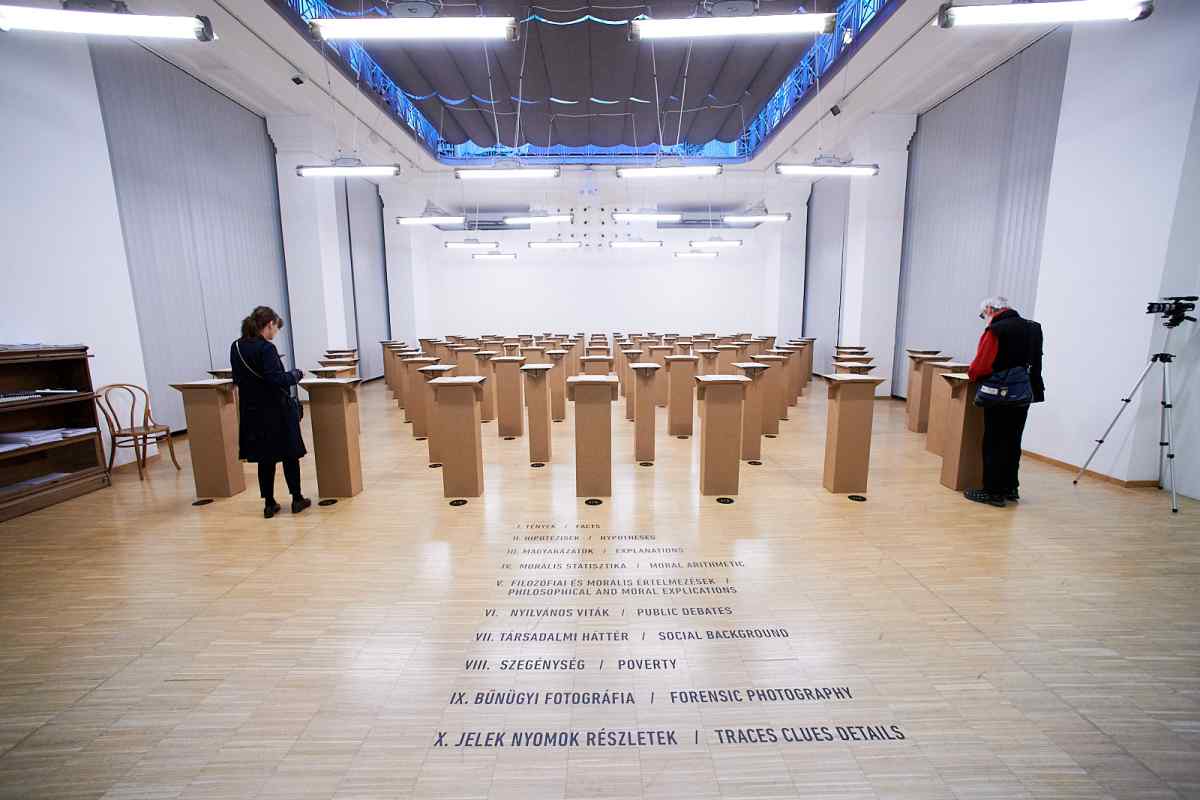SUICIDE
Hungary 1956–1986






A képeket válogatta / Image selection by SZILÁGYI Lenke
A szövegeket válogatta / Texts selected by RÉV István
Kiállításdesign / Exhibition design by TAMÁSI Miklós
“Suicide is an event of human nature, which… in every epoch must be discussed anew.”
Goethe
Suicide is considered to be the most personal decision; the person concerned decides that they don’t want to live any longer. How does the archives dare to show the lonely victim and the location where somebody in sheer desperation died by their own hand?
The photo archive of the Crime Scene Investigation Unit of the Budapest Police Headquarters has been transferred to the Budapest City Archives. Among the unorganized, unprocessed negatives of the several tens of thousands of photographs taken between the beginning of the 1950’s and the end of the 1980’s, there are photos of thousands of suicide scenes taken by crime scene investigators. The photos – not only those of the suicides – are staggering: presumably nobody ever saw Hungary in the decades following World War II like this: the penury, the desperate, desolate, hopeless conditions.
Suicide is a personal decision yet it is a social problem. The number and rate of suicides, the distribution according to gender, day, season, region, age or method all show reliable statistical regularity, the data usually change only slowly over several years or decades. Suicide rates were the highest in the world in Hungary for three decades, starting from the middle of the 1950’s: every year approximately 50 inhabitants per 100,00, on a yearly average only a little less than 5,000 Hungarians took their own lives.
Suicide rates gradually decreased between the middle of the 1980’s and 2006. So, this tendency started before the change of the regime, puzzling those who thought there were political reasons behind the large number of suicides and the subsequent decrease. However, suicide rates in Hungary are still among the highest in Europe. “The reasons behind the exceptionally high suicidal mortality in Hungary are not completely understood even today”, wrote acknowledged Hungarian experts of the field a few years ago. Researchers are aware of many aspects, numerous facts are known, various theories wish to highlight the causes, yet we do not have indisputable explanation to this phenomenon in the second half of the twentieth century in Hungary.
It is not only the explicable facts that enhance our knowledge; it is not only questions that have clear-cut answers that we should ask; it is not only that is not stirring to see that has to be shown; we should also talk of the things that are difficult to put into words.
We made an effort to consider the right to honor the memory of the deceased and to informational self-determination of the victims and those left behind. We sought to act with moral integrity and in compliance with regulations and ethical norms. Therefore, only adults can visit the exhibition. We are truly sorry if despite our utmost efforts we have caused any pain to anyone.
The exhibition was organized by Blinken OSA in collaboration with Fortepan Photo Archives and the Budapest City Archives.
(We have tried to respect the rights of the victims and those left behind to privacy and information, so the victims cannot be identified in the pictures. In selecting and presenting the images, every effort has been made to act in accordance with the law, moral decency and ethical standards. The exhibition is therefore open to adults only. If, despite our best efforts, we have caused any harm to anyone, we apologize.)